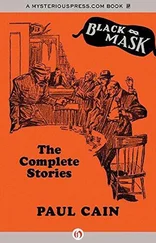“Vermin also,” Kogan assures him. “It runs in families. Let’s be fair: in our country, you don’t have to be a decent person in order to get arrested.”
“You surgeons would like the world to believe that you are detached from death,” says Levinson. “Actually, you love the dead.”
“And actors? You love the living?”
“You, Kogan, are a surgeon without an OR,” says Levinson.
“And you, Levinson, are an actor from a burned-down theater.”
“And who am I?” asks Lewis, climbing behind the wheel of the Black Maria.
“My friend,” says Kogan, getting in on the other side.
“And the only family I have,” says Levinson, getting in after him.
The doors are slammed shut, and the Black Maria pulls out of its hiding place, heading toward Zapadnaya Street.
* * *
“Do you think your friend suspects anything?” asks Lewis.
He remembers her name well, very well, but there is no reason to let the old men know that, despite his efforts, thoughts about the girl have been creeping into his mind, interfering with his never-ending assessment of his exceedingly complicated, one might say hopeless, situation.
“Kima?” asks Kogan. “I am sure not.”
Lewis waits. Surely Kogan, a compulsive storyteller, will let some information slip.
“You can’t tell by the way she talks, but she has a clear head, like her father,” says Kogan.
Lewis waits.
“The Commissar,” Kogan continues.
Lewis looks up inquisitively.
“A hint: the name Kima.”
Kima is a woman’s name based on the acronym Communist International for Youth, KIM. Had Kima’s parents had a son, his name, presumably, would have been Kim.
“Her father was in the Comintern for Youth?”
Kogan nods.
“Comintern for Youth was Zeitlin … Yefim Zeitlin.”
Lewis makes no effort to remember the names of Soviet officials. They enter his memory effortlessly, on their own, joining a hall of fame next to the ballplayers of the Negro Leagues. The latter gallery was boarded up abruptly in 1931, as Lewis left America.
“Exactly!” shouts Kogan. “Hence, Kima Yefimovna.”
“Her last name is Zeitlina?”
“Petrova … her mother’s name. She is listed as Russian. This might save her.”
“Zeitlin was executed in 1938,” says Lewis, whose memory extends to statistics of terror, too. “What about her mother?”
“Mysterious death, in 1942,” says Kogan. “Most people who blow out their brains can’t help leaving a gun nearby…”
“She didn’t?”
“No. And the suicide note was a carbon copy. The girl was ten. She grew up in an orphanage in Karaganda.”
“Did you know her parents?”
“Met her father a few times in 1918. Solomon knew him better. I first saw her here, in the dungeon beneath GORPO, in bottle redemption. Do you expect to encounter an enlightened face when you redeem bottles? But there she was, her eyes burning in the dungeon.”
“And you became her friend.”
Now Lewis knows where she works, at the GORPO, an acronym for City Consumer Organization, a cooperative.
“Mentor, for the lack of a better word,” says Kogan. “An intelligent young woman would not get much of that in Karaganda. I invited her to tea; I prescribed Akhmatova.”
To Lewis, this is a familiar choice.
“From Akhmatova, I moved to Tsvetaeva and Mandelstam. Always start with the moderns. If your student is a woman, appeal to the lyrical. Ask her what she thinks, and when she is ready, cautiously mention feelings. Then, after a few months, if signs of feelings are observed, prescribe Zoshchenko and Babel, to develop a sense of the absurd and a sense of history.”
“Absurdity and history … aren’t they the same, in your country?”
“Yes, Comrade Lewis, definitely, proudly, yes!” says Kogan. “But that’s something you learn at home, not at an orphanage. If you see signs of feelings and instill the sense of the absurd, you work back to the foundation: Pushkin. Starting with Pushkin is wrong. Without proper preparation, Pushkin is nothing but pretty verse and cheap melodrama.
“Think of Onegin : Tatyana loves Onegin. Onegin doesn’t love Tatyana, but changes his mind later. He does … he doesn’t … he does … oy ! He shoots a friend at fifteen paces. Bang-bang … basta ! Write a dim-witted opera, stage a ballet. Narishkeit! But if you are able to feel and laugh, you’ve beaten history at its game, and then the real Pushkin awaits you in his debauched glory.”
“I am familiar with the curriculum,” says Lewis.
He is, after all, a walking testament to its effectiveness.
* * *
The Black Maria pulls up to the darkened dacha of Professor N. Since the houses on Zapadnaya Street stand vacant and shuttered during the winter, there is no reason to hurry.
Kogan bounces out of the cab, opens the gate of Zapadnaya Number Four, and climbs onto the running board.
* * *
Tied with the chain that under normal circumstances suspended a bucket, three partially clad white corpses are laid out next to the well.
Sadykov is positioned three meters from the well, a chain looped twice under his arms. The nineteen-year-olds lie closer to the well, the chain passed once under their arms and tied in knots under the armpits. All three are in undershorts, their milk-colored skin on the verge of transparency.
“Commanders first,” says Levinson.
The skin of that which once was Lieutenant Sadykov is cold and slippery. Lewis fights the gag reflex.
The lieutenant is propped up, folded over the edge of the well.
“Let him drop,” says Levinson to Kogan, who is holding the winch handle.
Sadykov’s body goes over the edge, dangling on the chain. The chain tightens, and one of the nineteen-year-olds starts to slide toward the well, pulled by the descending Sadykov.
“Help him to the edge,” commands Levinson. Lewis feels queasy. Levinson and Kogan are unmoved.
“This is the land of the dead,” Lewis declares to himself. Frozen, like a corpse dangling on a chain. The nineteen-year-old is doubled over, his arms and face hanging over the water.
“Now, send him,” commands Levinson, taking the right leg and motioning to Lewis to take the left.
“I didn’t come to arrest him ,” says Levinson, sensing Lewis’s reluctance to take part. “He came for me.”
“I know … it was war,” says Lewis, taking the left leg and easing the corpse over the edge.
A moment later, the boy is dangling above Sadykov, and the third corpse moves sled-like toward the well.
“Kogan,” says Levinson curtly. “Hold it. Don’t let the handle spin.”
“Yes, komandir. ”
“Let’s help him,” says Levinson, and he and Lewis position the boy over the edge, his blank eyes turned to the comrades below.
As the last corpse goes over the edge, Kogan drops to the ground, letting the handle spin. The bodies hit the water with three distinct splashes.
“The beauty of this is that we can always fish them out and bury them,” says Kogan as Lewis bends over the edge to let out a stream of vomit.
“I’ve seen this reaction in first-year medical students,” says Kogan, his hand resting on the back of doubled-over Lewis.
“And I’ve seen it in actors,” counters Levinson.
“Actors? I’ve seen it in the audience,” says Kogan.
“When?”
“When you were onstage!”
* * *
Indeed, halfway through his career at GOSET, Levinson became known as “the janitor of human souls.” It’s also true that sometime in the thirties, the theater wags had stenciled his name on the janitor’s closet and on every bucket therein.
Many stories were told about the Levinson-Mikhoels broyges (rivalry). Here is one: in a nasty, public altercation in 1932, at a time when Mikhoels suffered from a crippling depression, which Levinson regarded as a sign of weakness, der komandir shouted: “Gey shpil Kinig Lir, Khaver Direktor!” Go play King Lear, Comrade Director!
Читать дальше












